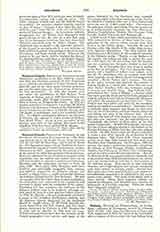

Solomon Islands, PREFECTURE APOSTOLIC OF THE SOUTHERN (INSULARUM SOLOMONIARUM).—The Solomon Islands are in the Pacific Ocean, lying between 154° 40′ and 162° 30′ East long., and 5° and 11° South lat. The Spanish navigator Alvaro Mendana de Neyra discovered the Islands of Ysabel, Guadalcanar, and San Christoval in 1567. Impressed by the natural riches of the islands, he called that group after King Solomon. Mass was celebrated by the Franciscan chaplain of the expedition, but the soldiers and sailors were not in sufficient number to organize a permanent settlement. Mendana and his expedition returned to Peru, July 26, 1569. On April 5, 1595, Mendana, with three hundred and sixty-eight emigrants, men, women and children, started for the Solomon Islands, and landed at Santa Cruz, a small archipelago between the Solomon Islands and the New Hebrides. He died two months after; his widow Dona Ysabel, and Quiros, the chief pilot, took command of the expedition, and returned to Spain with the remainder of the colony. Thereafter for two centuries, the existence of the Solomon Islands came to be doubted, although sea-men spoke of them as a rich and marvelous country. In 1781 M. Buache, a French geographer, presented a paper to the Academic des Sciences, showing that the Solomon Islands discovered by the Spaniards should be sought about 12′ 30′ South latitude, between Santa Cruz and New Guinea, and that those islands discovered by Carteret in 1767, Bougainville in 1768, and by Surville in 1769 were the same. D’Entrecasteaux found later that the surmises of the French geographer were correct, and many of the names bestowed by the Spaniards were restored. The group, which is the most important of the Pacific lies about five hundred miles east of New Guinea and covers an area of 17,000 square miles. The names of the principal islands, proceeding from the southeast in a northwesterly direction, are San Christoval, Malaita, Guadalcanar, Florida, New Georgia, Vella Lavella, Ysabel, Choiseul, and Bougainville.
A Brief dated July 19, 1844, and signed by Gregory XVI, entrusted the Society of Mary with the evangelization of the country which extends from New Guinea to the Gilbert group. Towards the end of October, 1845, Msgr. Epalle, S.M., sailed from Sydney with eighteen missionaries. The ship sighted San Christoval on December 1 at the southern extremity of the Solomon group. Thanks to the kindness of the captain, the bishop was able to survey the coast for a few days, but on discovering that the position was not a central one, the party decided to steer for Ysabel. On December 12 they were lying at anchor in the Bay of Astrolabe. The vicar Apostolic, three priests, and a handful of sailors went ashore, to be met by the aborigines, who, at a signal from their chief, mortally struck Bishop Epalle and dangerously wounded a Marist Father and a seaman. The rest of the party escaped and interred the remains of Bishop Epalle in a lonely islet, where fifty-six years after Father Rouillac, S.M. was fortunate enough to recover and identify them. Msgr. Collomb, S.M., embarked on the “Arche d’Alliance”, a barque which had been specially fitted out for Catholic propaganda work by a French naval officer, Commander Marceau, and joined the missionaries at San Cristoval. Three Fathers had been killed and eaten by the cannibals, another succumbed to malarial fever. Determined not to uselessly court massacre any longer on that spot, they set out for Woodlark and Rook Islands, where the new bishop and some of his followers died. Of the eighteen who had left Port Jackson, ten years before, five only now survived. On the representations of Propaganda, the Society of Mary gave up the Solomons temporarily. In 1852 Propaganda committed the care of these unhappy islands to the Fathers of the Foreign Missions of Milan; but they also were obliged to leave. In 1897 Rome asked the Marist authorities to make a new effort towards the civilization of the Solomon tribes. Msgr. Vidal, S.M. (Vicar Apostolic of Fiji), on May 21, 1898, landed with three Fathers at Rua-Sura, near Guadalcanar. On August 22, 1903, the mission was made a prefecture Apostolic, comprising the Islands of New Georgia, Florida, Guadalcanar, Malaita, San Christoval, the Santa Cruz archipelago, and all the islets under British protectorate. Rev. E. M. Bertreux, S.M., was appointed prefect Apostolic, and at the present time (1912) seventeen priests, ten sisters, and a lay brother labor with him in that portion of the Solomon group. They attend to nine principal churches, forty-eight chapels, nine schools, numbering each from twenty to seventy pupils. Several hundred natives have been baptized, and a fair proportion are sufficiently prepared to be admitted to the sacraments every month. The nuns teach eighty girls in three schools. About three hundred women are regular catechumens, and assemble every Sunday for instruction in Christian doctrine. There are about three thousand neophytes.
E. M. BERTREUX

